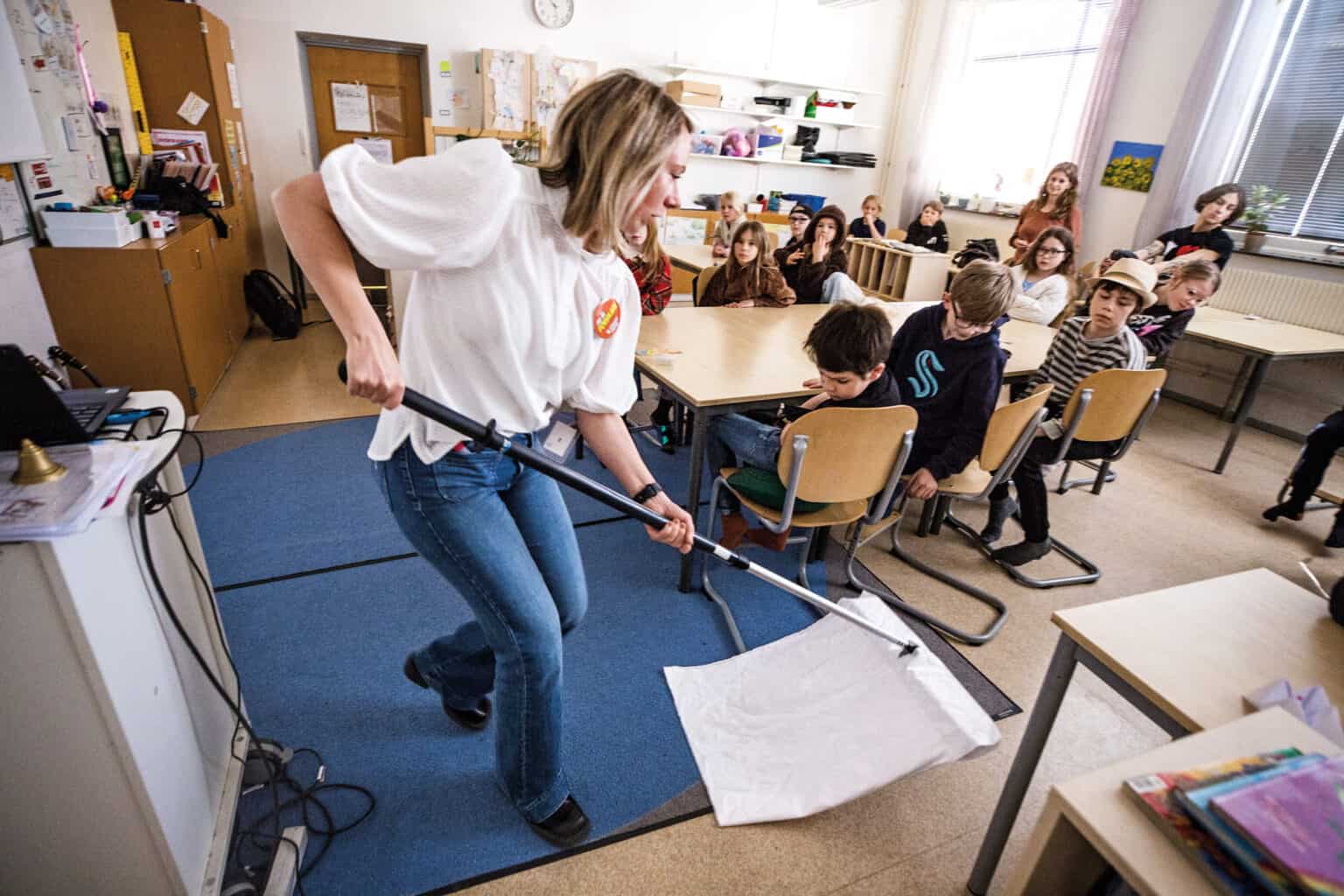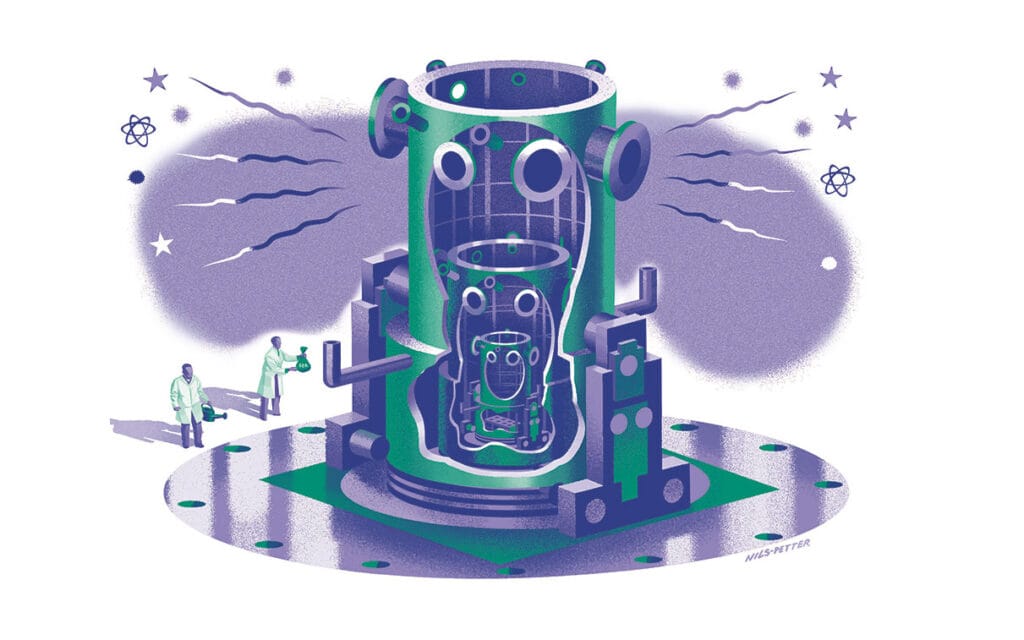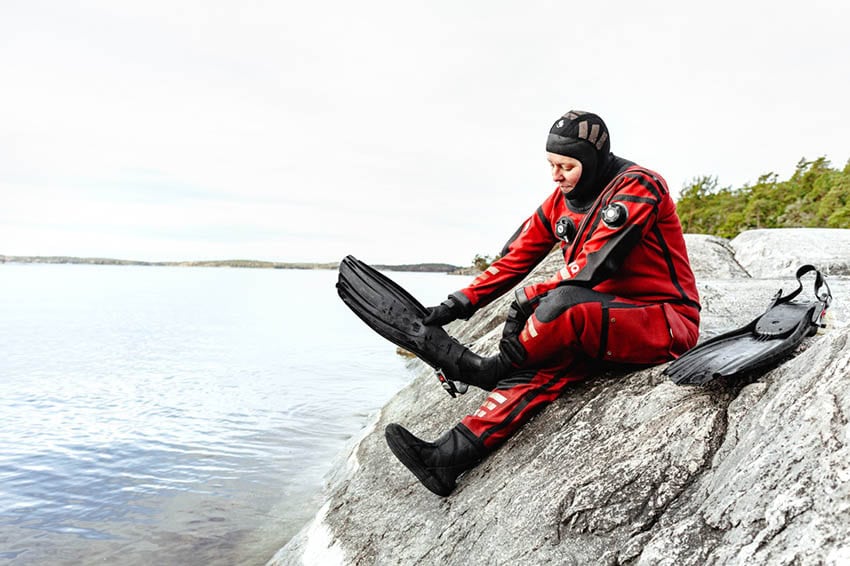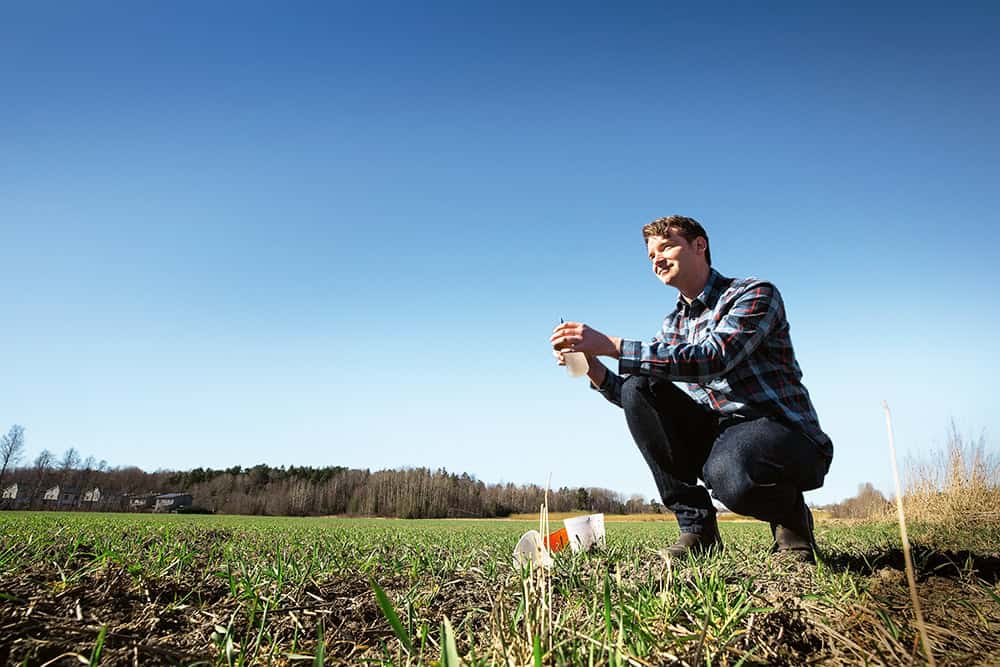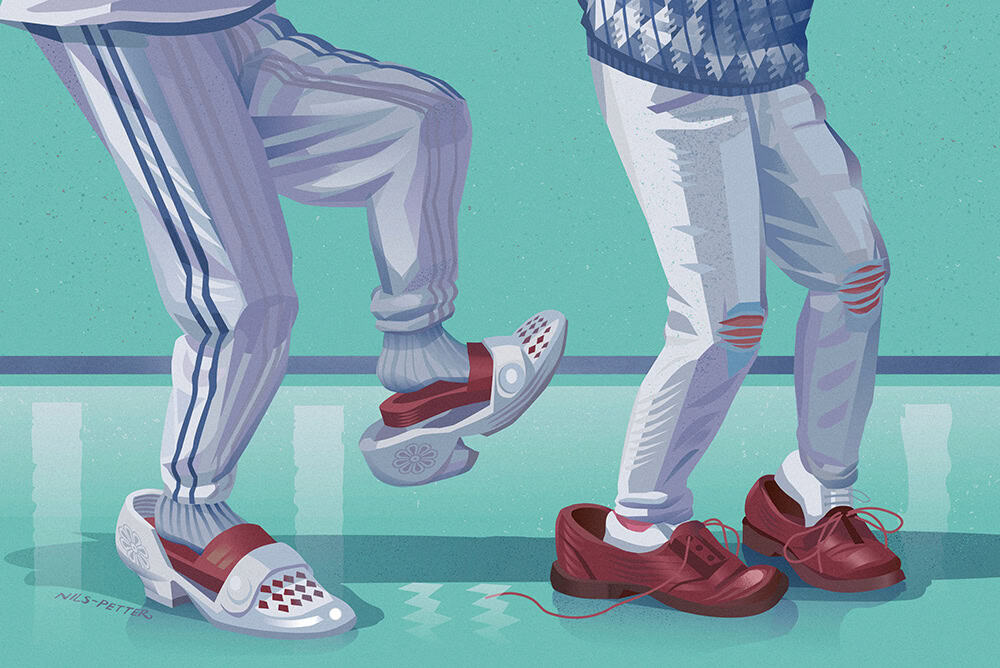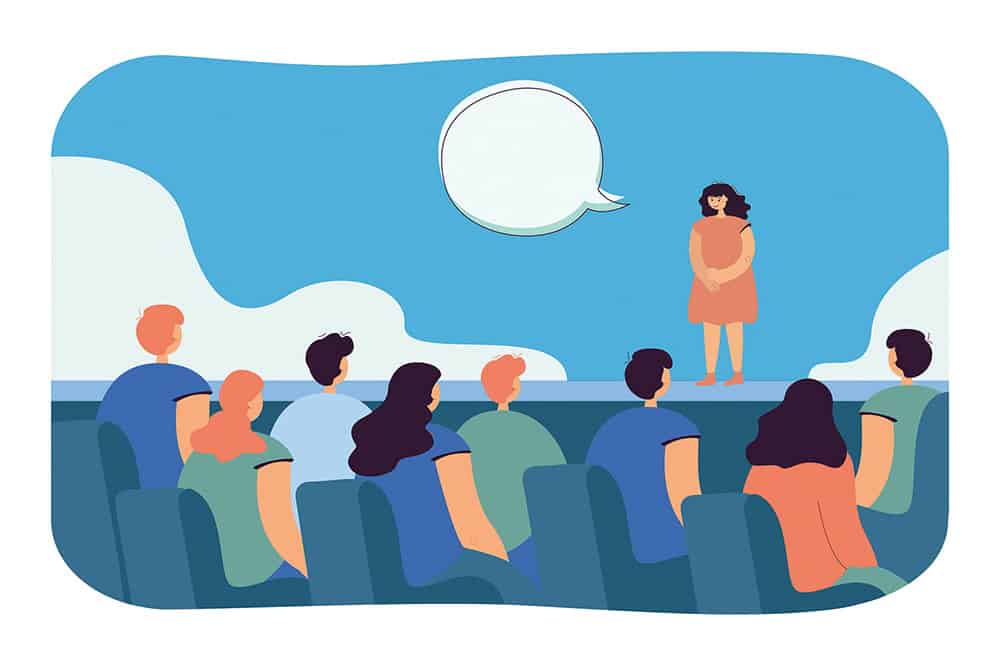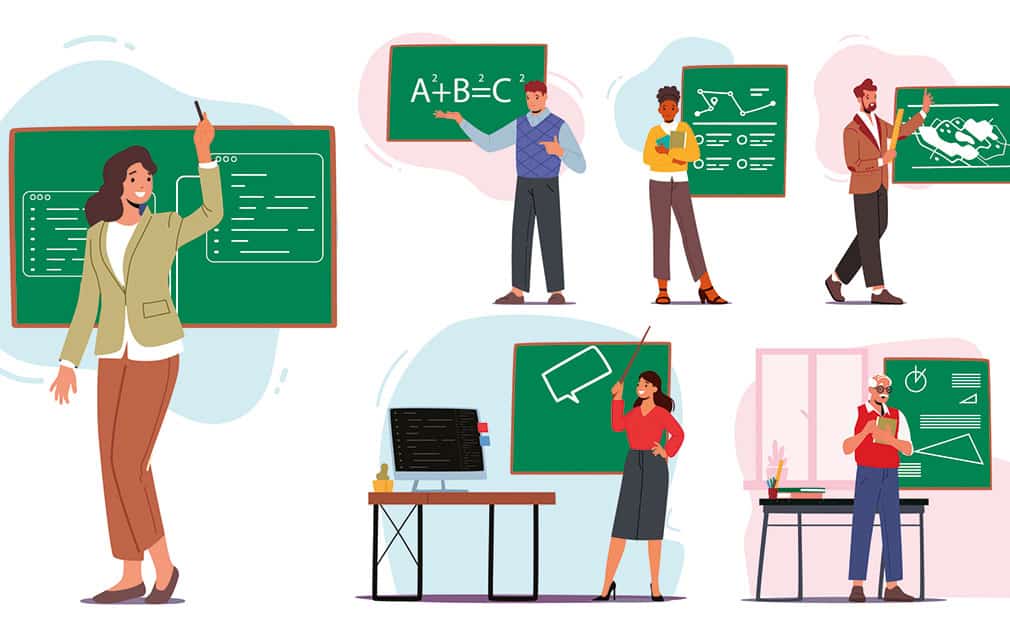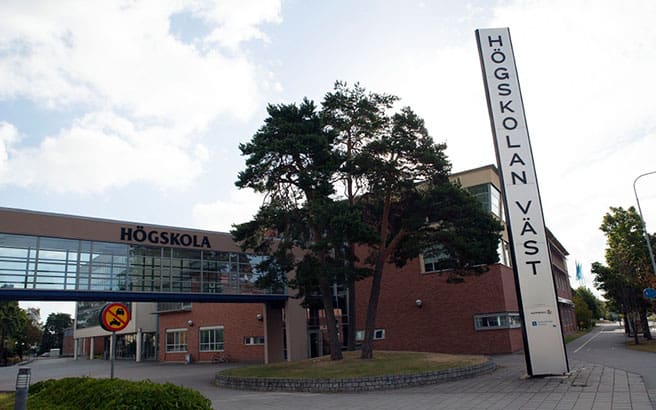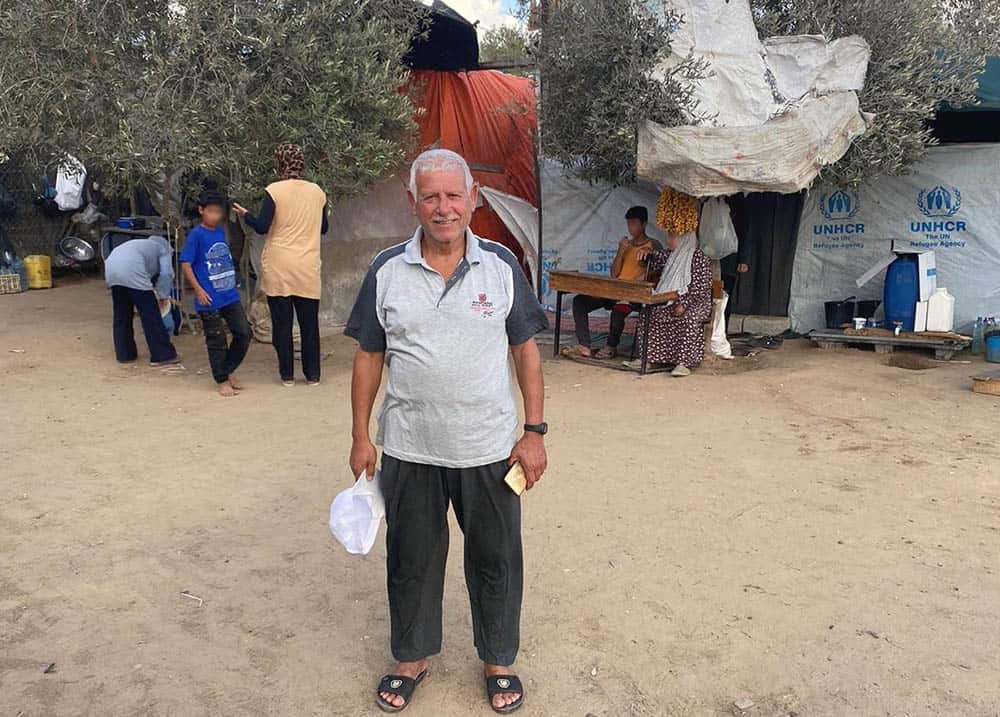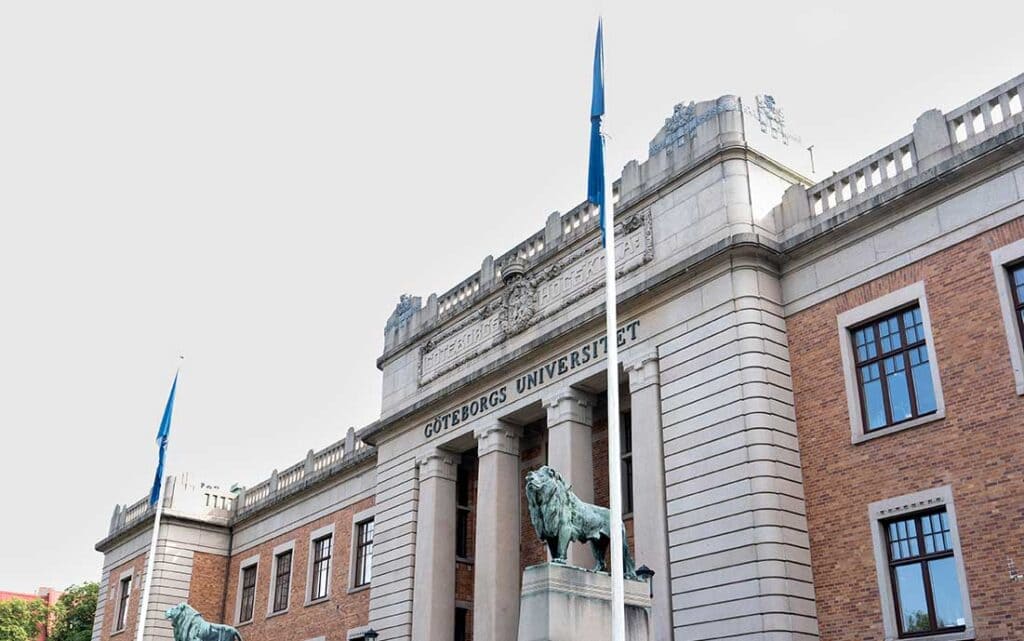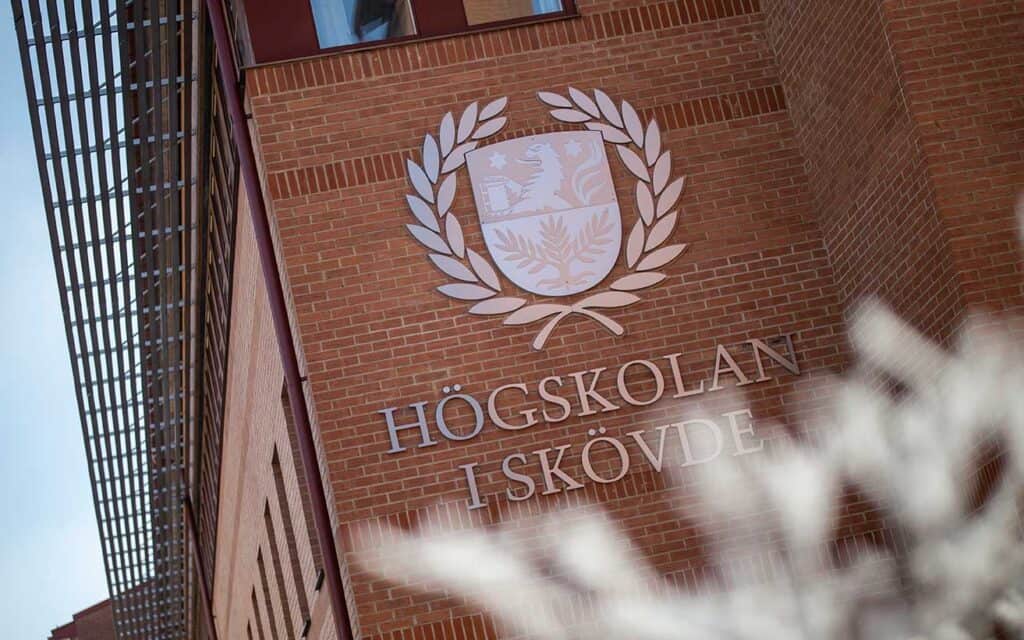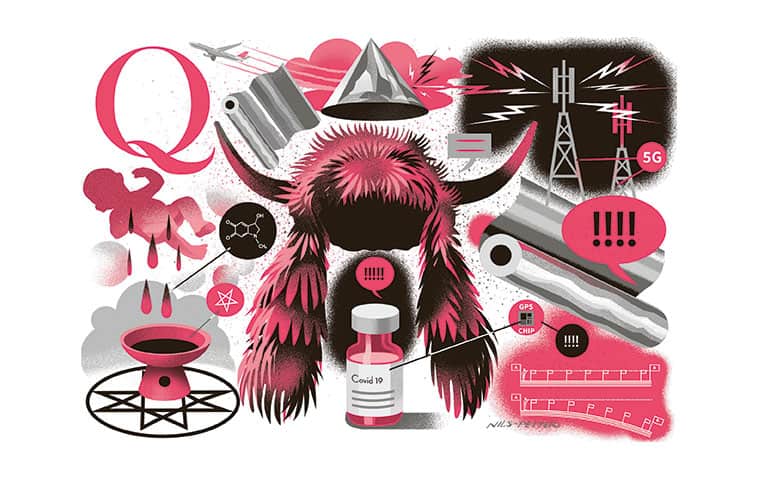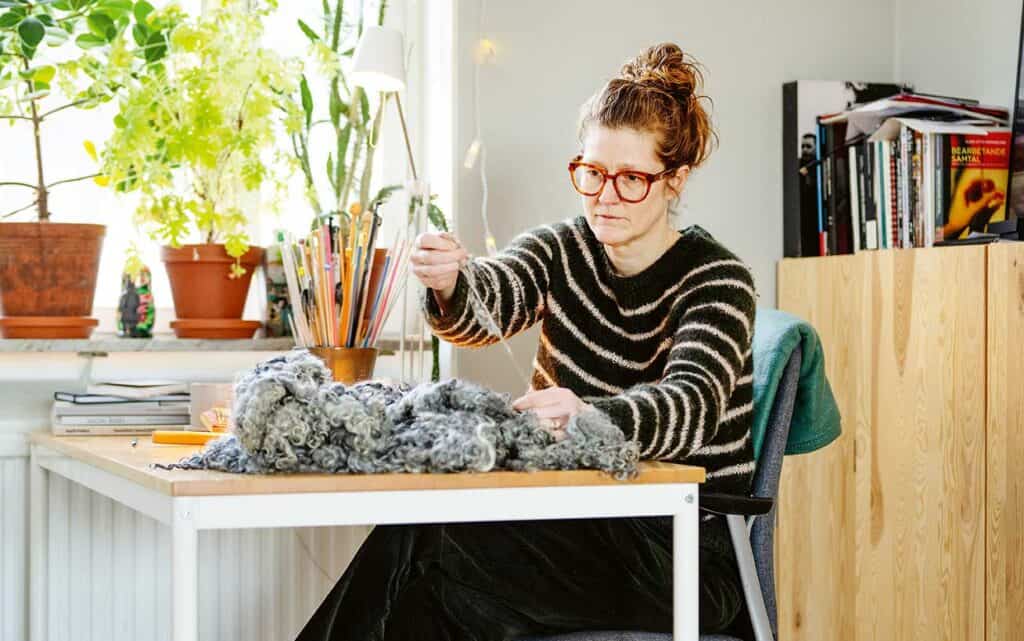A microscope, several small magnifying glasses, some flax seeds, mosquito repellent and a floor mop. Doctoral candidate Thérese Janzén has brought lots of things with her to the small classroom at Sågtorpsskolan in Nacka, just outside Stockholm. The students in class 3A sit expectantly.
“I’m a researcher and teacher and work at Södertörn University. Do you know what a scientist does?” she asks.
“They research and do things so that people know what exists,” a girl answers.
“Exactly,” Janzén replies. “And do you know what my research is about? Ticks.”
Lots of hands shoot up. The children want to tell her about ticks they have found on themselves or seen in different places. One boy says that he has had Lyme disease.
“I almost got Lyme disease too,” chimes in another.
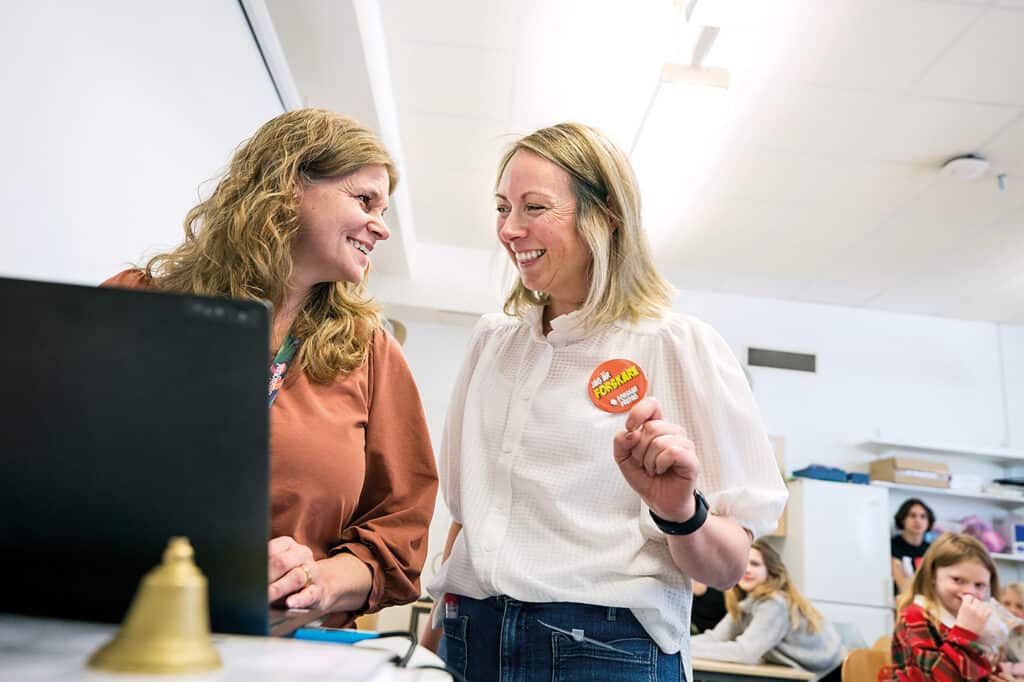
Initiated by Public & Science
The screen on the wall behind Janzén shows a large picture of a tick. She asks the children if ticks are insects. It turns out that everyone knows that they are not, but arachnids.
“What would you do if you found a tick that had eyes, so it could see,” asks one girl.
“Then I would be impressed, because ticks don’t have eyes. At least not the normal ticks that we find here in Sweden,” Janzén replies.
Her visit to Sågtorpskolan was arranged through a scheme called Borrow a Researcher, an initiative set up by the non-profit organisation Public & Science (Vetenskap & Allmänhet, VA). One week per semester, schools, as well as non-profit associations and workplaces, can borrow a researcher to come and talk about their subject and what it is like to be a researcher. A digital platform makes it possible to search for researchers in various subjects based on target group, location and available dates. The researcher can also visit digitally.
“Borrow a Researcher has grown in popularity and become a public engagement project in its own right”
Borrow a Researcher began in 2021 and is part of the national science festival ForskarFredag (Research Friday), which in turn is part of the European Commission’s European Researchers’ Night initiative.
“Borrow a Researcher has grown in popularity and become a public engagement project in its own right,” says Julia Brink, the project manager for ForskarFredag at Public & Science. “It focuses on dialogue. The pupils must be allowed to ask questions, while the researcher learns to tackle a new target group. It also provides researchers with opportunities to be asked questions that they might not have thought about before, which can open up new avenues of research.”
The feedback from teachers has been overwhelmingly positive. “We hear how grateful they are for this opportunity, that they are extremely pleased, that they would like a visit from a researcher every week,” says Brink.
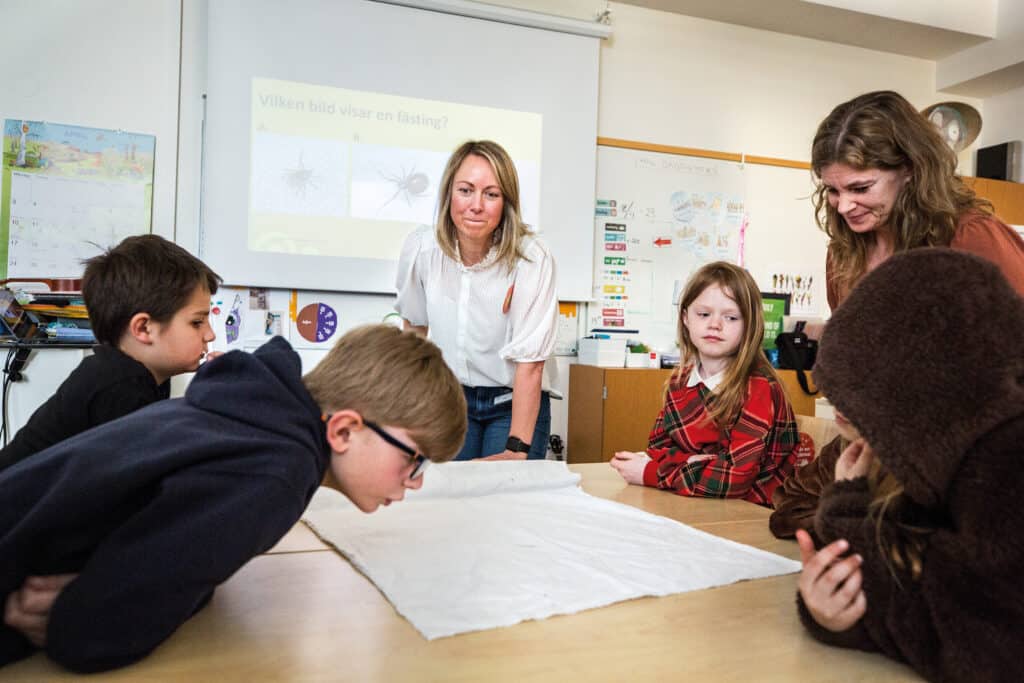
Looking for more researchers in humanities and social sciences
Public & Science supports the researchers by providing tools and coaching before their visits. Researchers can decide for themselves which target group they would like to meet. Some focus on younger children, while others are most comfortable with high school students.
“We’ve had researchers from almost every higher education institution in Sweden,” says Brink. “Many find us themselves. I think it’s a way of engaging in third stream and public engagement activities that suits many researchers. It’s for a limited time, and they can choose when and how they visit,”
The first time around, many younger researchers and doctoral candidates participated. Now there is more of a mix. The gender distribution of participating researchers is also very even, she adds.
THE SCIENTISTS
Marlene Ågerstrand is an associate senior lecturer at the Department of Environmental Science at Stockholm University. She researches how people and the environment can be protected from harmful chemicals through the use of better scientific evidence in political decision-making.
“Now we have several more prominent researchers and a spread across all disciplines. But we would like a few more representatives from the humanities and social sciences. We see that there is interest in visits from them.” Around 70 per cent of the researchers participating so far have represented science, technology and mathematics.
In order to reach out to teachers, Public & Science has used Facebook groups for subject teachers, for example. Marie Cederlund, who teaches class 3A at Sågtorpsskolan, found out about Borrow a Researcher through a colleague who saw a post in just such a group.
“It sounded exciting, so we third grade teachers booked Thérese Janzén,” says Cederlund. “It’s good to bring in people from outside who talk about their jobs, so that we bring society into the school and don’t become an isolated world of our own.”
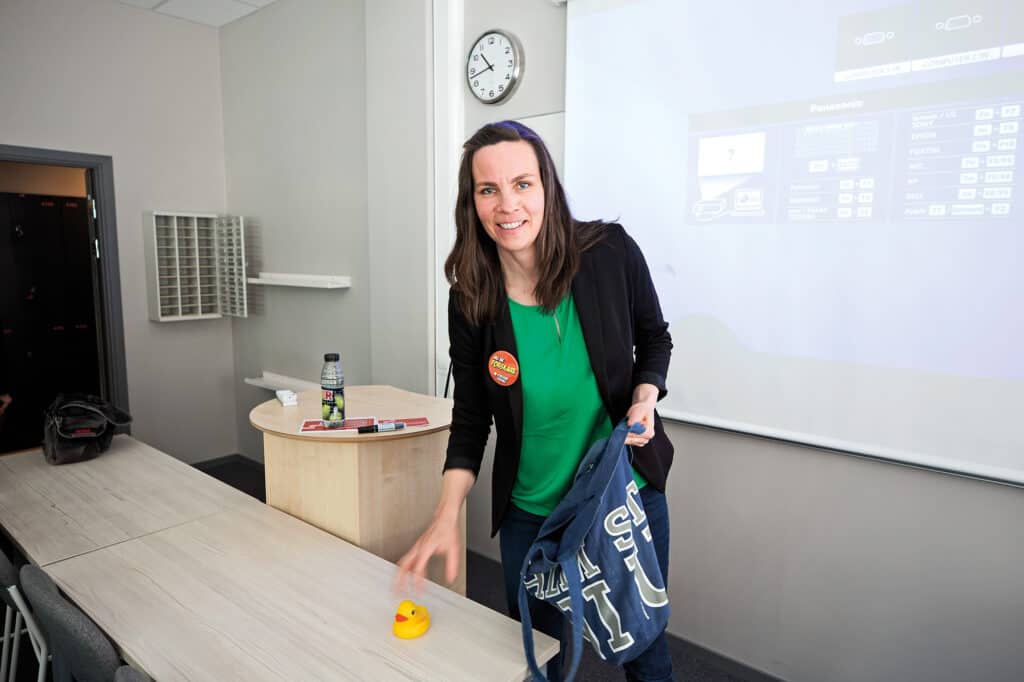
Shows future possibilities
Marie Cederlund thinks it is important that her pupils are well prepared for a visit like this and therefore had the class read a little about ticks beforehand. “But I didn’t want to reveal too much, just the basics so Thérese had something to build on,” she says.
She would like to see more collaboration with colleges and universities, for several reasons. “The children mostly see school and education here and now, but it’s good for them to know that you can continue to study and go to school when you are an adult too.
For Thérese Janzén, this was the first time she had participated in Borrow a Researcher. But she has some experience after participating in the Science Festival several times. “Then I usually meet secondary school and high school classes. I think it’s a fun way to think about how I communicate my research. It’s good training for other contexts too, like if I’m looking for funding or talking to journalists,” she says.
She thinks it is important to make research accessible, especially to target groups that do not usually get to know about it. Partly to spread knowledge about what science is and to inspire young people to go into higher education and perhaps do research themselves, but also to challenge the image of what a researcher is.
“I want to show that as a researcher I am a completely normal person with a very cool job. I would like to get out to schools even more often and reach out to society with my research.
UKÄ EVALUATING PUBLIC ENGAGEMENT
Following this update, the Swedish Higher Education Authority, UKÄ, has been commissioned by the government to evaluate the public engagement activities of higher education institutions. Its report will be presented in October 2024.
“I gained a new perspective”
In the heart of central Stockholm is the high school Klara Teoretiska Gymnasium Stockholm Norra. Some of the third-year students on the natural science programme have chosen environmental chemistry as a specialist subject, and their teacher, Hoda Alrikabi, has booked Marlene Ågerstrand, assistant lecturer at the Department of Environmental Science at Stockholm University. She researches how people and the environment can be protected from harmful chemicals – a perfect research area for environmental chemistry students.
Ågerstrand begins by describing her background and explaining that the research profession was not a career path that she was aware of for a long time. She was interested in animals, and worked for a time at an animal hospital. “But after a while, I felt that there was so much work on an individual level, one animal at a time. I realised that I wanted to work with the bigger picture, the effects of poisons and chemicals at population level,” she says.
She continues by going through how different chemicals are spread in the environment, what effects this has on animals and people and what measures can be taken.
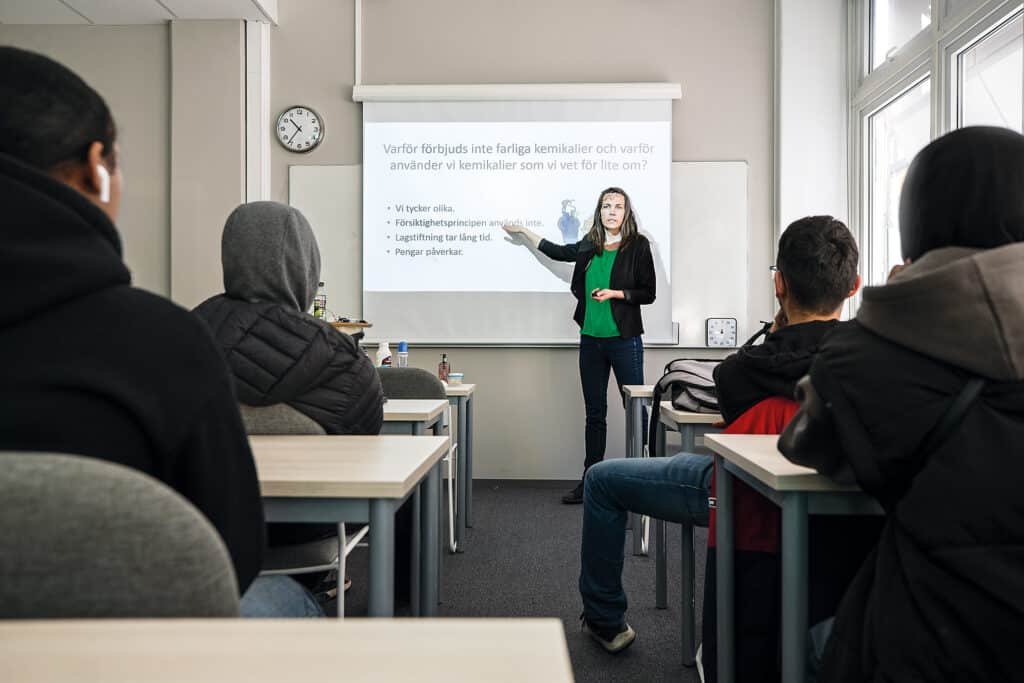
Patricia Aghazadeh is one of the students in the class. She would like to meet more researchers during the course. “We hear so much about chemicals and other things, but don’t always get the researchers’ perspective. They are the experts. It’s also important because they are involved and make a difference, and they can inspire us.”
Her classmate Carlos Meracastro agrees. “I gained a new perspective from this visit. I didn’t think that you could research how chemicals affect us humans. I think meeting researchers can increase interest among some people who are initially not that into research.”
Develops students’ action skills
The high school students’ teacher, Hoda Alrikabi, will continue to use Borrow a Researcher to book researcher visits. It provides a stronger link to reality compared with the students just sitting and reading themselves, she believes.
“It’s a way to build stronger ties between the school and society. The students get a more pluralistic approach and they develop their action skills so that they can apply their knowledge to the problems that exist in society,” says Alrikabi.
“There is so much competition and so much to deliver. We apply for positions all over the world and need to be competitive”
She would like to see closer cooperation between higher education institutions and schools. It was only by chance, through a Facebook group, that she found out about the possibility to borrow a researcher. “The study and careers counsellors could facilitate contact, for example. Otherwise, it would be easy for the students to just be shut in a box in the classroom. They need more contact with the real world.”
Marlene Ågerstrand has participated in Researcher Friday before, but this is the first time she is out visiting a school. She sees it as a challenge to generate interest among the students without scaring them or creating anxiety about the future. “For me, it’s extremely important to be a part of strengthening the role of research in society and encouraging the next generation to go into research. It gives me so much joy to meet the students.”
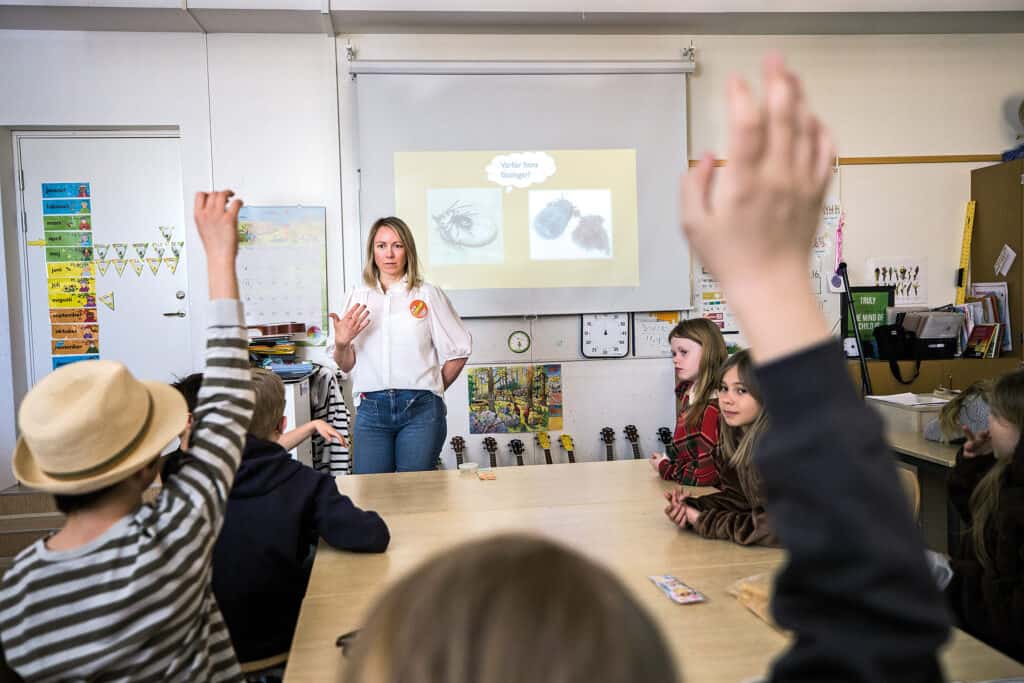
Ågerstrand feels that Stockholm University supports researchers’ involvement in third stream activity and public engagement tasks. At the same time, she points out, the academic system is structured so that these do not give much merit when it comes to promotion. First and foremost, you have to have done research and raised money, then teaching comes second and public engagement is prioritised least.
Want a certificate for their CV
Ågerstrand believes that many researchers do not feel that they have time to be out meeting the public. But she doesn’t really see how it could be otherwise. “There is so much competition and so much to deliver. We apply for positions all over the world and need to be competitive. Counting publications is an easy way to rank researchers. If I’ve been out lecturing to high school students, how should that be valued?”
Doctoral candidate Thérese Janzén sees her school visits as a clear merit. She feels that Södertörn University sees public engagement activities as important. “I will definitely put this on my CV. At Södertörn University, doctoral candidates can receive credits by taking small courses, such as making popular science presentations. The visits I’ve made now could be used in that course,” she says.
Julia Brink, project manager at Public & Science, has understood that the researchers would like to have some form of certificate that they can use for their CVs after participating in Borrow a Researcher. “They feel that this should be seen as meritorious for them. But we have not received any feedback that lack of time or that it is not formally regarded as meritorious for an academic career would prevent people from participating. That happens for other activities, but not here – it’s so voluntary and flexible,” she says.
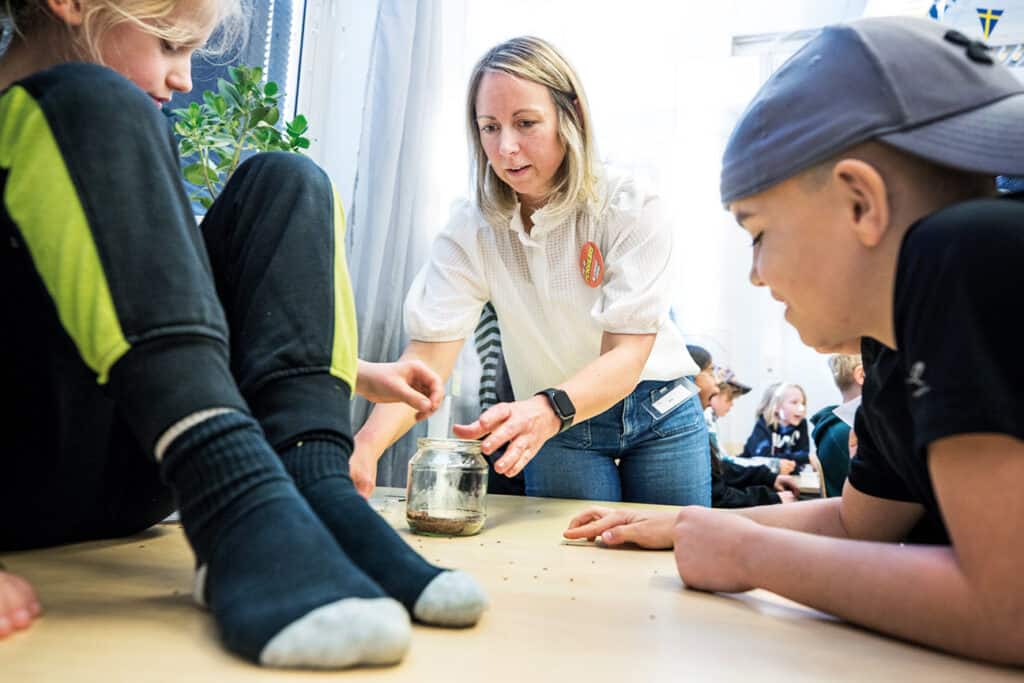
“Everything we know, someone has found out”
In class 3A at Sågtorpsskolan, the children get to try doing some tick research at different work stations. In one part of the classroom, they get to catch ”ticks” – in this case flax seeds – with a mop and tweezers. At another station, there are magnifying glasses where they can study dead ticks up close.
At the station that turns out to be the most exciting, Janzén conducts an experiment with a live tick to see how effective mosquito repellent is. She rolls mosquito repellent on a piece of paper and releases the tick in the middle to see how it moves in a path between two painted ice cream shapes. The tick has spent a long time in a test tube and seems a little shaken at first. But eventually it moves, and seems to avoid the mosquito repellent, to the delight of the children.
“Everything we know has been found out by someone, somehow. And it’s researchers who have discovered the new information”
The last thing Thérese Janzén does before leaving the class is to show a film about what a tick does when it attaches itself to the skin and sucks blood. Some of the children think it looks a little scary.
“It really looked like it was swimming in the skin,” says Elsie Alm Feuk. She has also learned that the female tick is larger than the male. “Before, I thought they were all the same size,” she says.
Ella Reinfeldt Hedberg thinks the visit was exciting. “It was cool. Being a researcher is not exactly my dream job, but I might consider trying it,” she says. If she does, she thinks she will do research about rabbits. “I love rabbits, and I’d like to know the best way to take care of them.”
Leon Åkerlund would like to do research on lions and Benjamin Björkenäs Bravo is more interested in how monkeys grip when they climb, while Liam Berisha would like to focus on research on people and evolution. He has a clear idea of why research is necessary. “Everything we know has been found out by someone, somehow. And it’s researchers who have discovered the new information,” he says.
”Confidence in research is essential”
According to Gustav Bohlin, Assistant Secretary General and research officer at Public & Science (Vetenskap & Allmänhet, VA), both universities and researchers generally have a positive view of this collaboration. At the same time, there are still several obstacles that make it difficult to implement fully.
In 2019, Public & Science, together with five research funding bodies, conducted a survey among researchers about attitudes and experiences when it comes to communicating their research to the public. “It showed that researchers work under very different conditions. It is considered important to communicate with other groups, and half of researchers would like to do so more. But they feel hindered, usually by a lack of time,” says Bohlin.
There are often insufficient resources allocated to communicating about research. “There are also difficulties in finding suitable forums and target groups. And not everyone feels that they have enough knowledge about how to communicate their research effectively.”
Bohlin feels that there is great awareness today about the importance of higher education institutions interacting with the rest of society, and that the issue has wind in its sails. “Not least in light of the discussion about science denial and contempt for facts. Confidence in the knowledge produced through research is essential now that there are so many different information channels and given the developments within AI. That confidence must be developed and reinforced through dialogue.”
